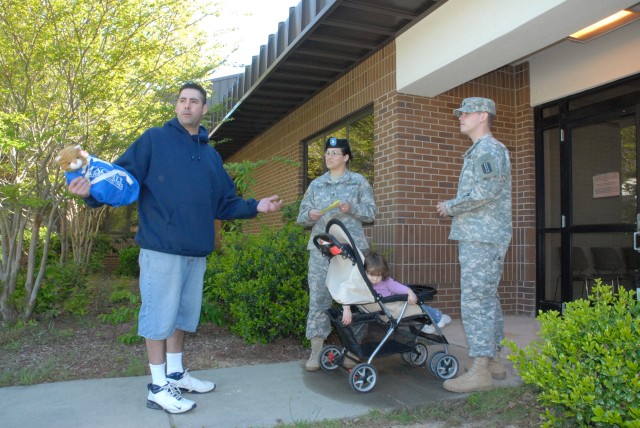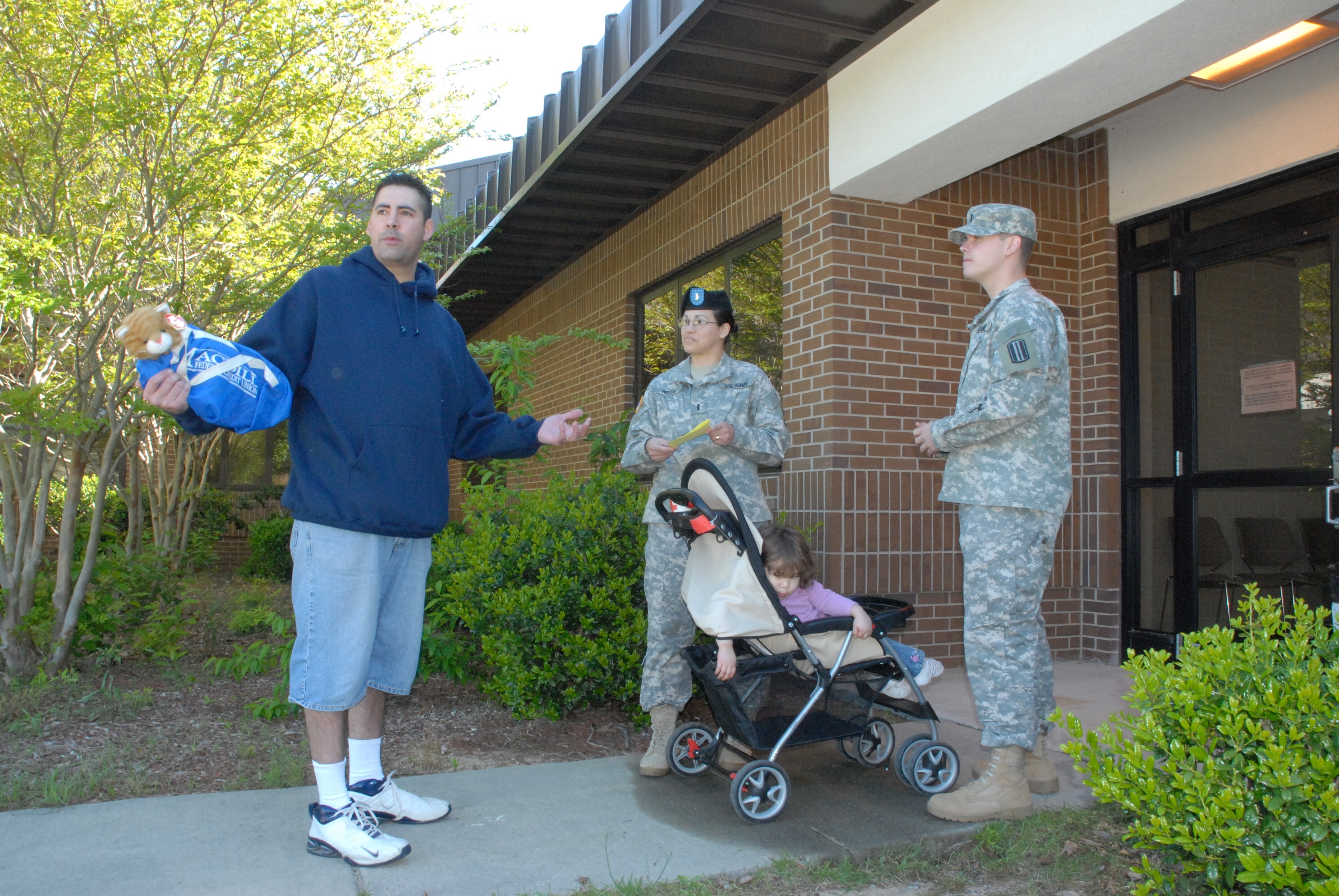
The worst of the hurricane has passed, but rain from the rear of the storm is still falling. Under these conditions, 1st Lt. Chris Devenport hated having to turn Carlos Rodriguez and his 2-year-old daughter Emily away from a shelter at the Floyd Spence Center.
"They came here with an animal (a small cat). Under the regulations for the shelter we can't accept any pets. We can't make any exception, no matter how big or how small," explained Devenport, Company D, 3rd Battalion, 13th Infantry Regiment. "Some of the people seeking shelter are going to be deathly afraid of animals, so if we start making an exception for small cats or small dogs, eventually it's going to escalate to larger dogs. We don't want anyone to be afraid to come seek shelter, we want to accept as many as possible."
Fortunately for Devenport and the Rodriguez family, the scene that played out April 16 was not real. It was the final part of a two-day training in disaster shelter operations sponsored by the Red Cross and the force protection division of the Directorate of Plans, Training, Mobilization and Security.
"Every year Red Cross and DPTMS force protection get together and train selected military to learn about shelter operations," said Jo An Miller, Red Cross director. "This training is based on Red Cross training that we do for our staff that goes out on national disasters. It has been adapted for the military to use on military installations in cases of a hurricane, tornado or flooding on an installation."
Twenty-seven Soldiers from different units across Fort Jackson took part in the training. The first day consisted of classroom learning followed by a tabletop exercise where the Soldiers had to decide on how they would evacuate different areas around post.
On the second day, the Soldiers had to set up an actual disaster relief shelter and respond to the needs of role players affected by a hurricane.
"It teaches these Soldiers who have been tasked with opening these shelters on how to open and manage them once they are up and running," Miller said. "It also teaches them how to work with the clients who come to the shelter."
As the victims of the hurricane arrived at the shelter, the Soldiers had to register them, determine if they had any medical (physical and mental) needs, ensure they were not trying to bring anything into the shelter that was against the regulations (such as pets and weapons), as well as feed them.
"It gave the Soldiers who were operating the shelter a chance to see some real-life situations that they might have to deal with in cases of severe weather," Miller said.
As for the Rodriguez family, "We gave him directions, a point of contact and a phone number to a shelter for animals," Devenport said. "His situation was unique in the fact that he didn't have transportation or a phone to call. We made arrangements with people inside the shelter to house his cat in somebody else's car until the storm was over."
With that situation resolved, Rodriguez and his daughter were allowed in the shelter to ride out the rest of the storm.
Michael.A.Glasch@us.army.mil

Social Sharing